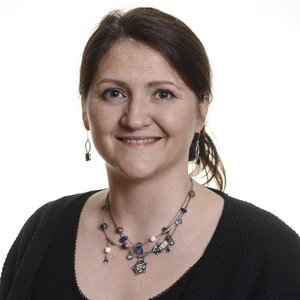

Above and below
Published: 05.07.2022
The first creatures to meet the eye, are several different species of birds. Some of the more common are seagulls (Kittiwake) and the little auks (Alle alle), but so far we have also seen black guillemot, ivory gull, Sabinemåke and a lone Eider. With the aid of binoculars we have also been able to spot other larger animals such as seals and polar bears, the latter occasionally coming almost a bit too close for comfort.
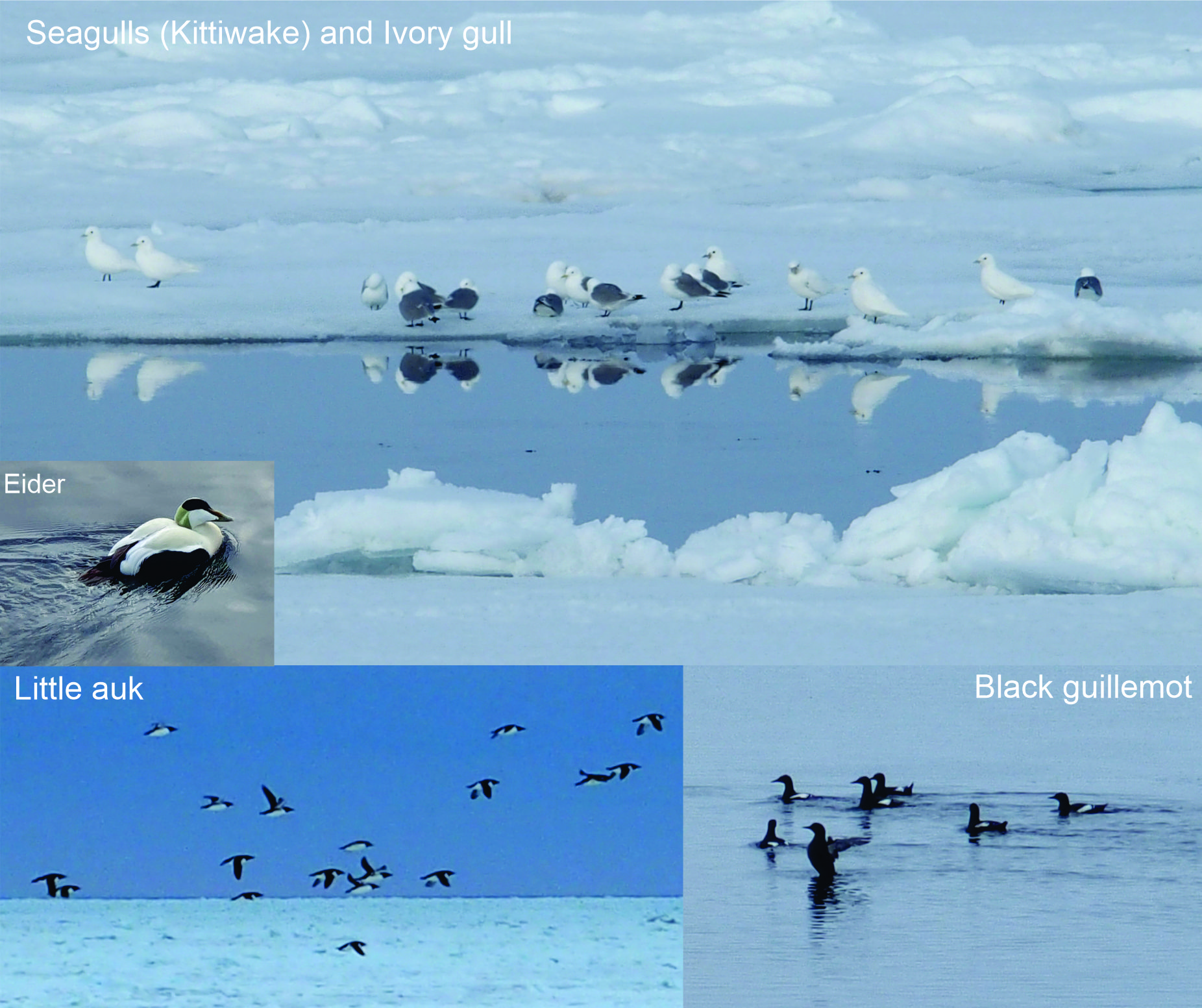
Photos: Seagulls, ivory gull, little auk and black guillemot: Valérie Bellec, Eider: Lilja Rún Bjarnadóttir.
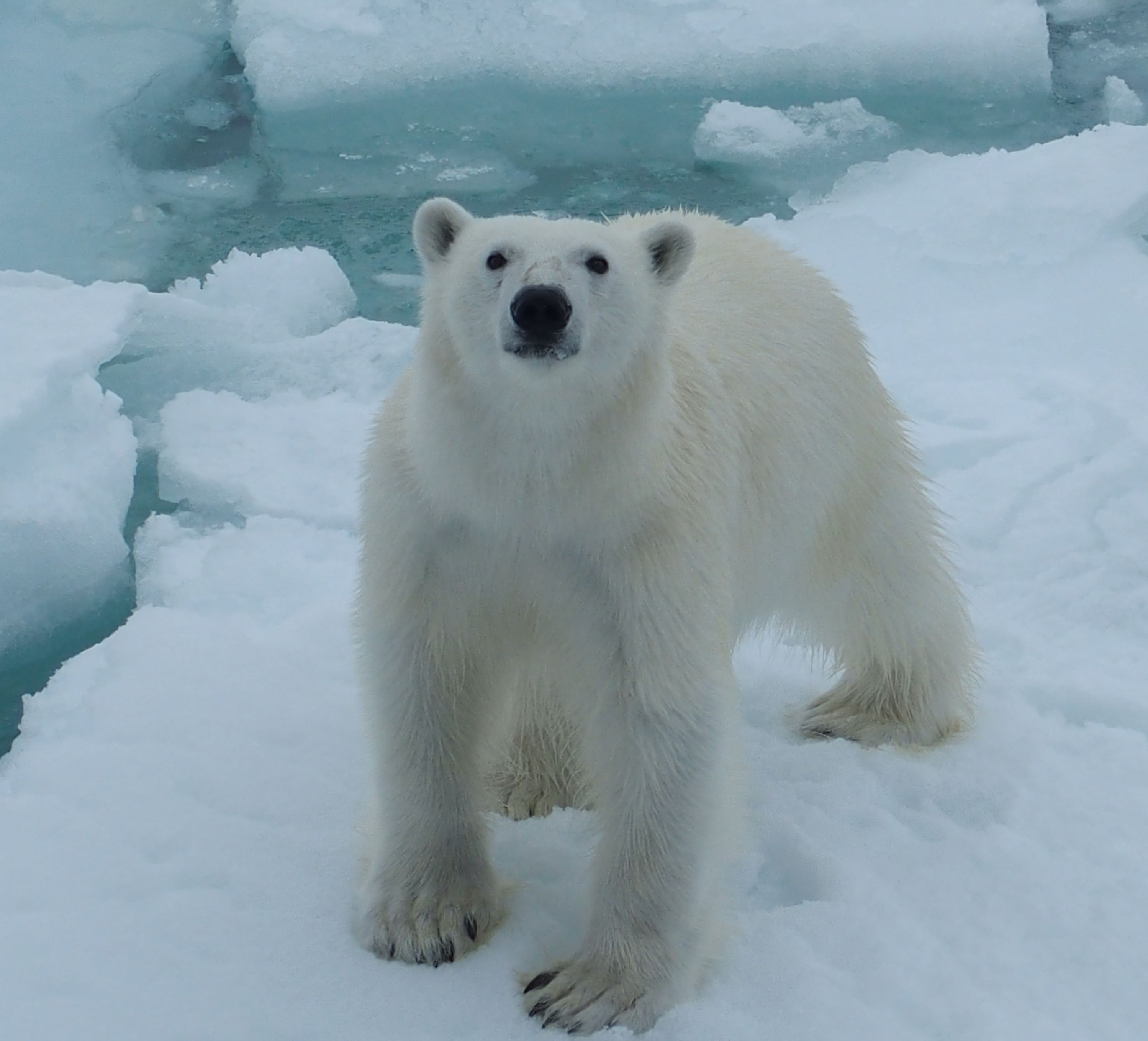
Photo: Valérie Bellec.
But although the life at and above sea level is pretty and thrilling to experience, the main reason we came north to Svalbard was not to observe the life on ice. Rather, we want to dig even deeper, into the darker environment found on the seabed below. The dark deep is a world of looming shadows and although it may be a stark contrast to the midnight sun above, it too is teeming with life.
To investigate the night dwellers, we launch our video rig named Campod through the Moonpool. The Moonpool is a square pit in the centre of the ship, where there is nothing that separates us from the sea apart from a trap door that can be opened and closed. From there, the Campod can safely reach the bottom and give us information about the sediments and the marine arctic fauna without hitting any large icebergs.

Photo: Valérie Bellec.
Once on the bottom, we discover a completely different world. The footage from our video transects shows that the seabed here mainly consists of sediments with varying amounts of mud and sand, with gravel, cobbles and boulders, and some places exposed bedrock. In some places we see traces of heavy trawling, while other areas appear more pristine. We notice that the density and assemblage of the animals varies considerably between our transects, depending on both the different substrate and water masses we pass through. Some animal communities prefer a coarse bottom type, like the large crinoids Heliometra glacialis and some of the sponges.
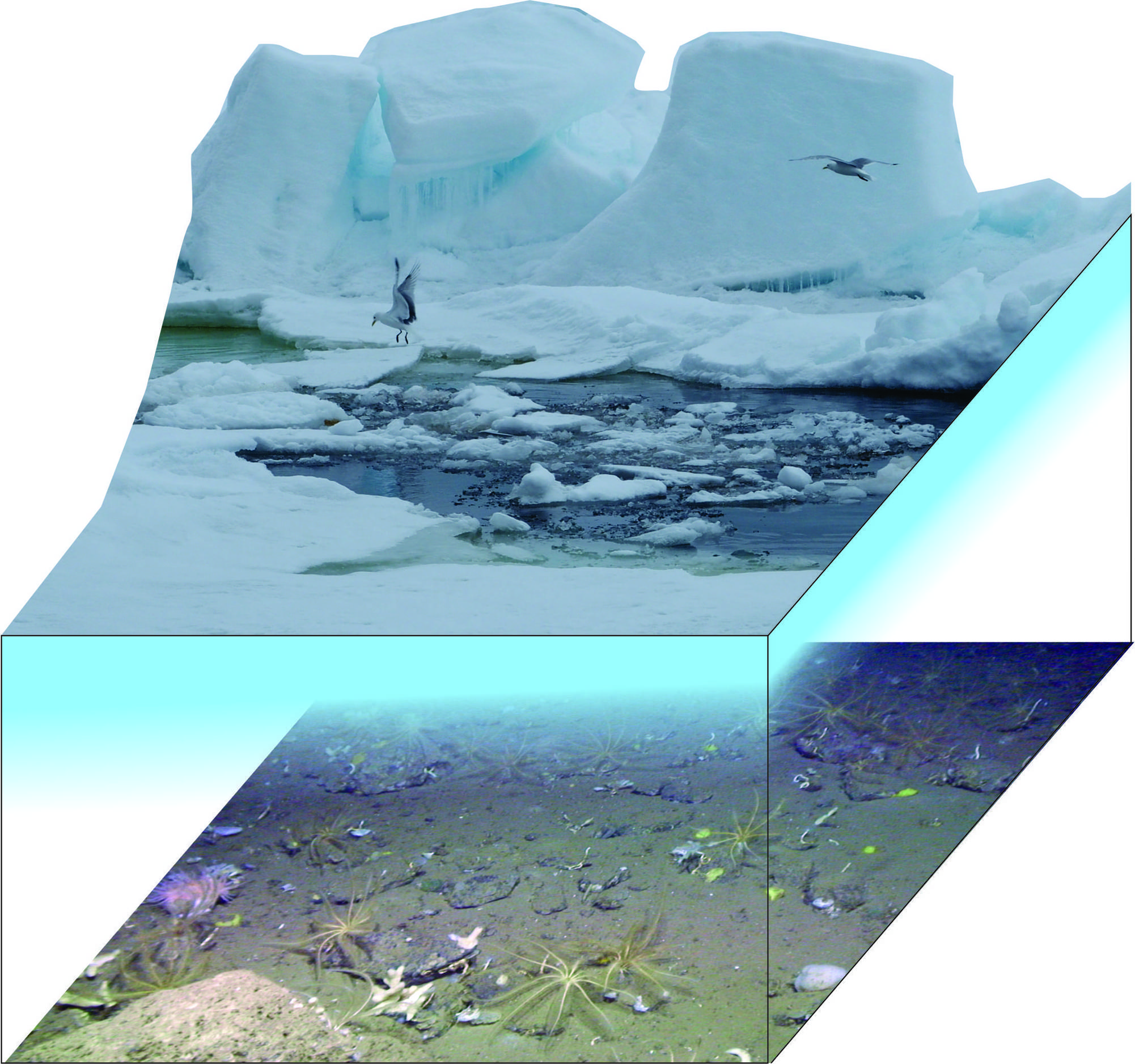
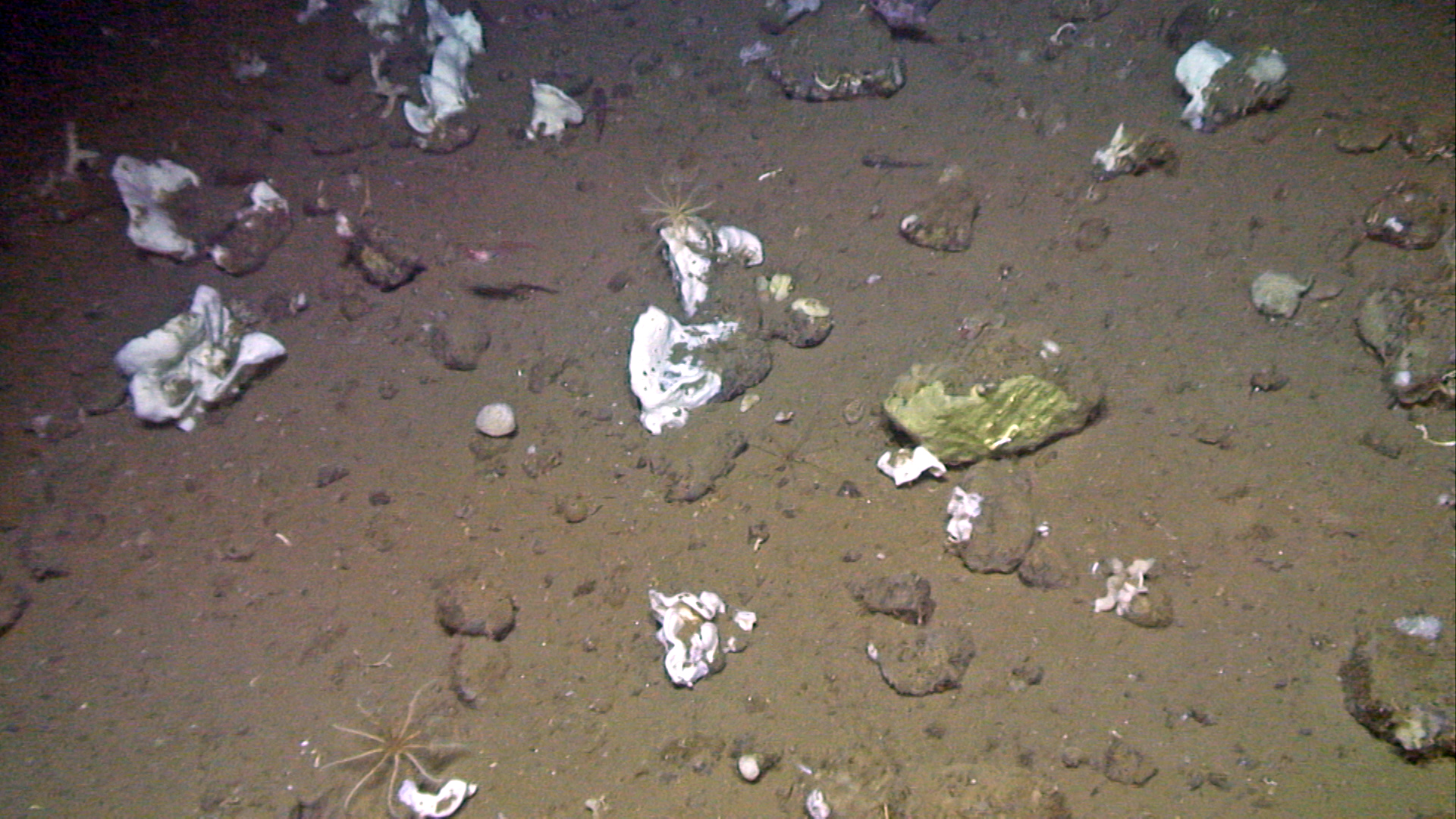
Photo: MAREANO / IMR
The substrate variations we observe are closely related to the regional geological history. Marks on the seabed bear witness to earlier encounters with icebergs and ice sheets that once covered the continental shelf in the Barents Sea. One example of such features are the myriads of iceberg ploughmarks on the seabed. These are grooves which were formed by large icebergs ploughing into the seabed on their journey away from the ice sheet margin. Just as when fields are being ploughed, the iceberg ploughing overturned the sediments, pushed up berms along their length and brought stones to the seabed surface. We will tell you more about other geological processes that influence the distribution of different habitats in coming newsletters.
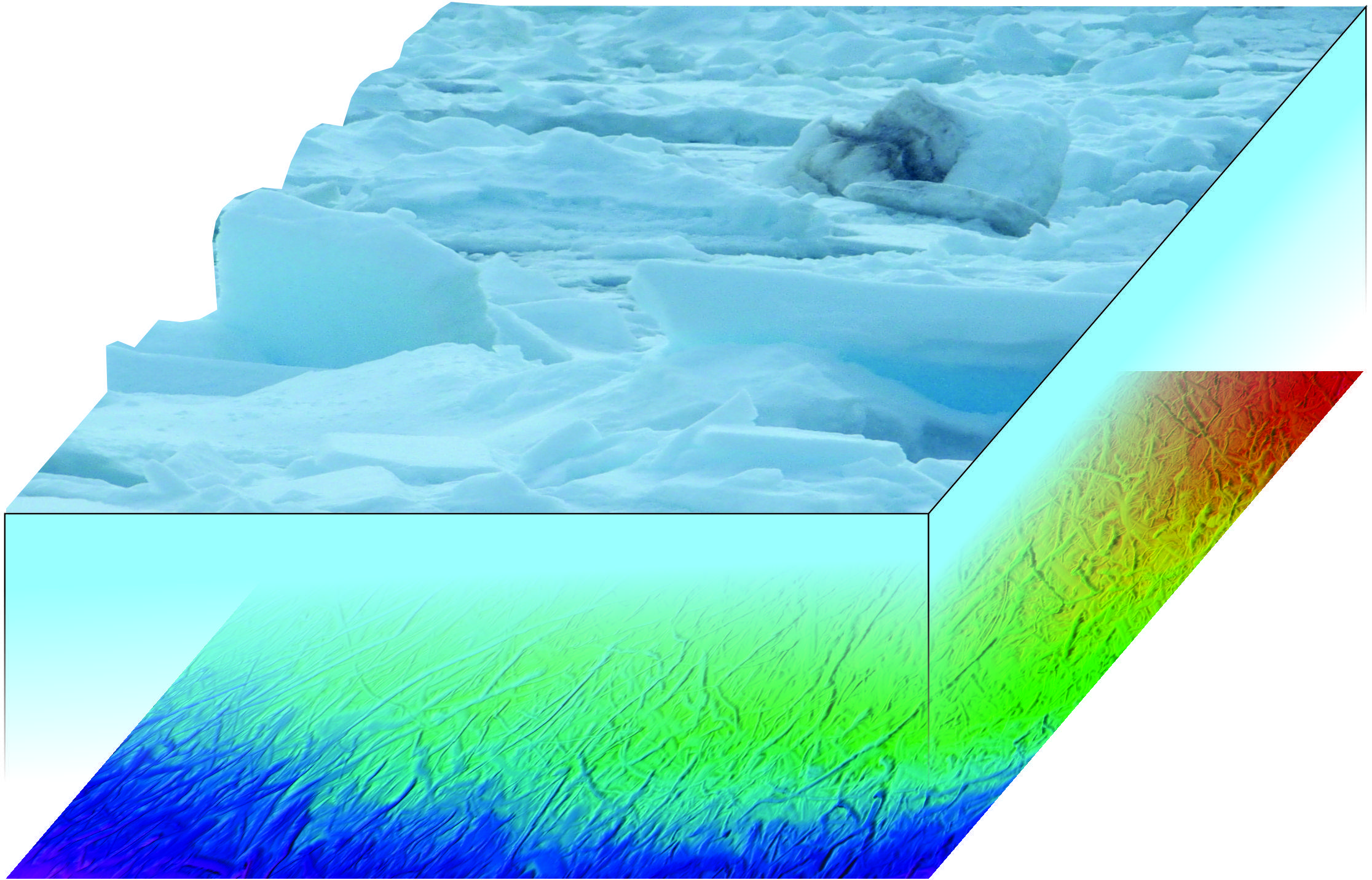
Illustration: Valérie Bellec. Bathymetry data from Kartverket.
